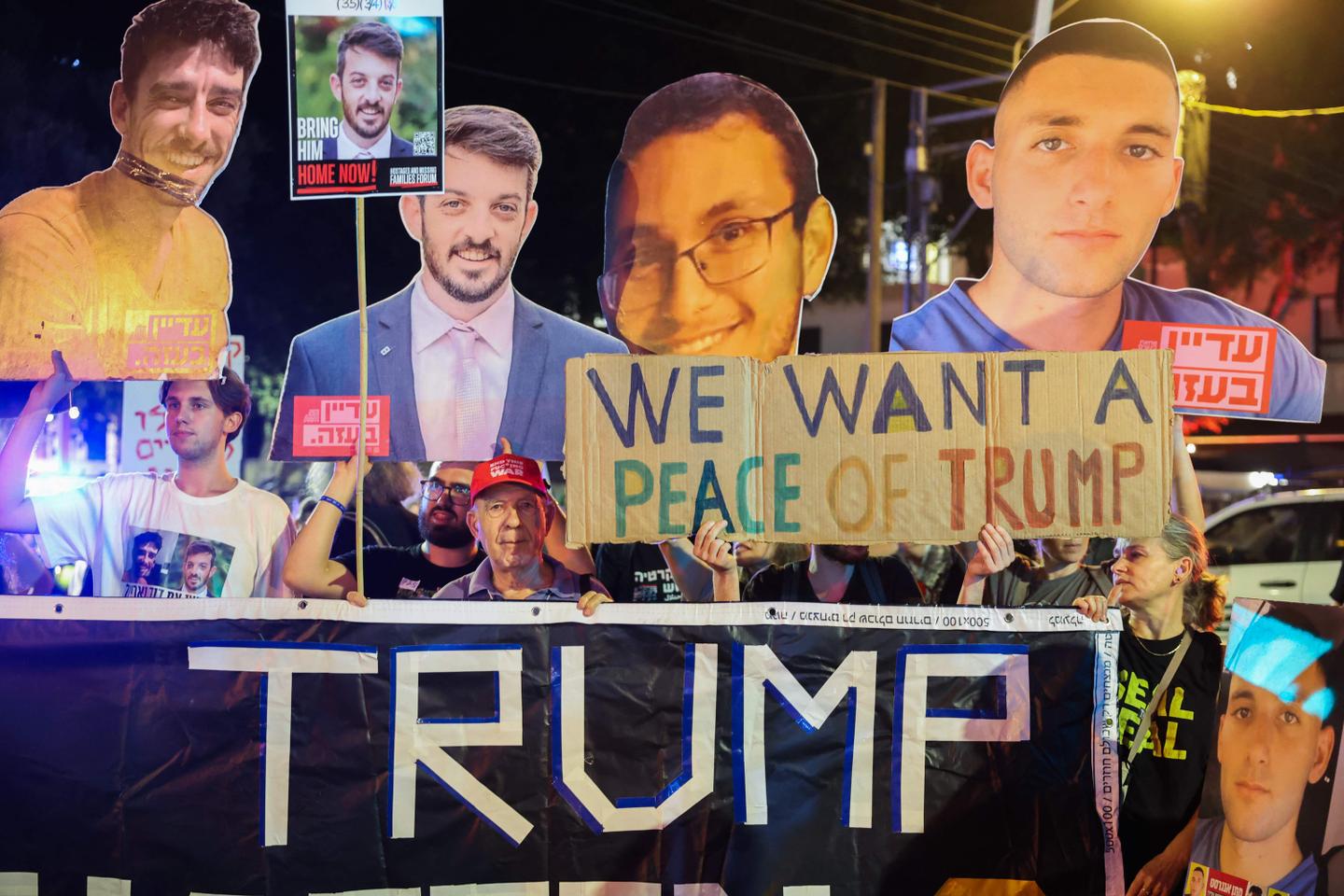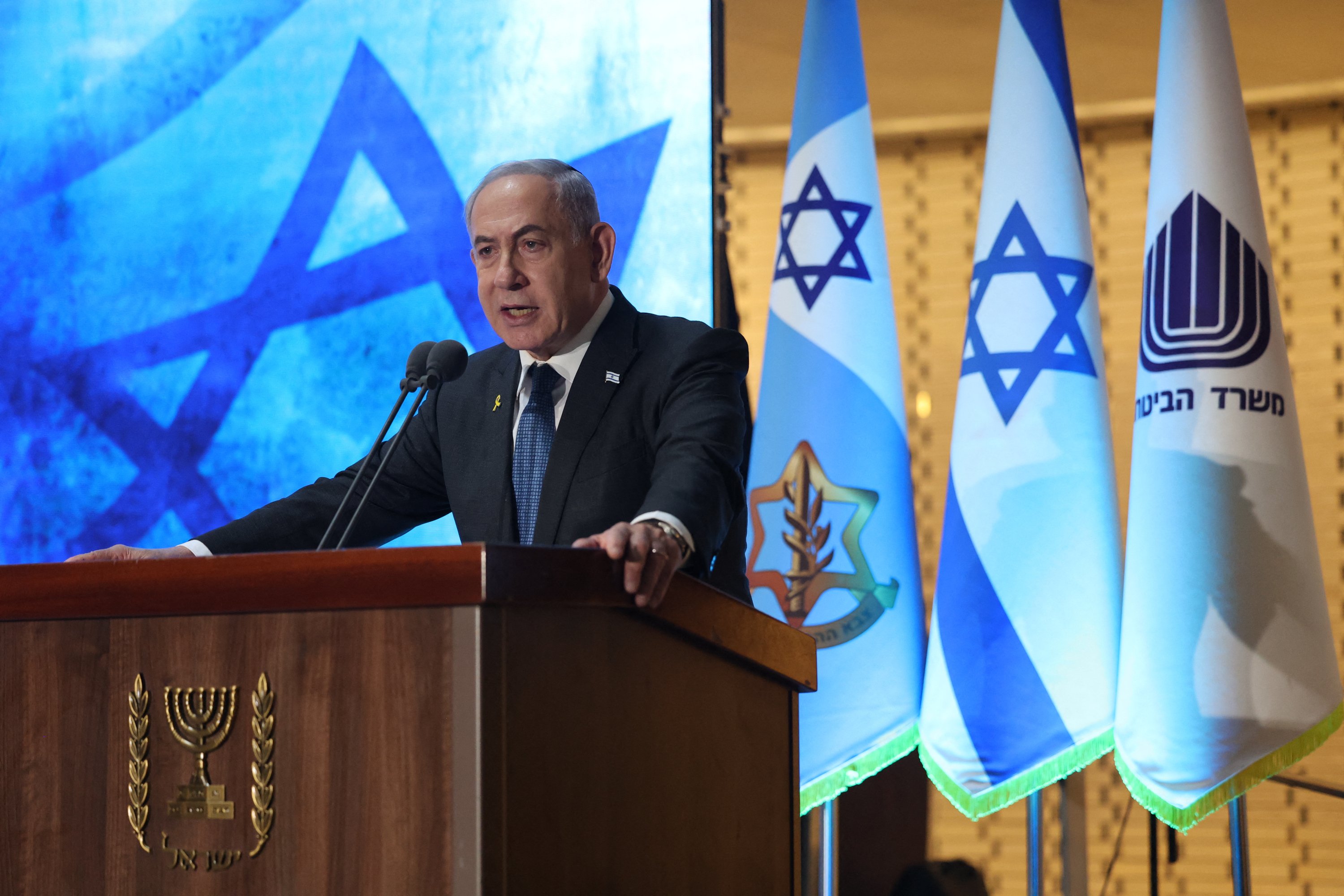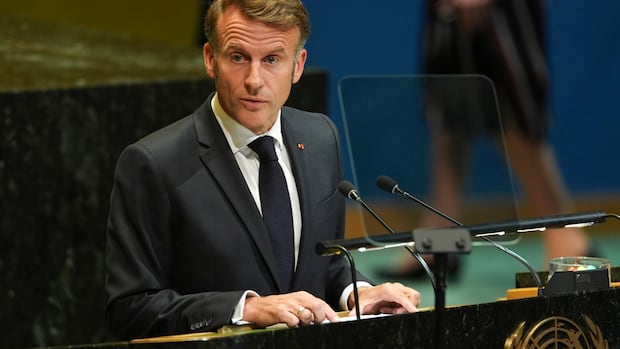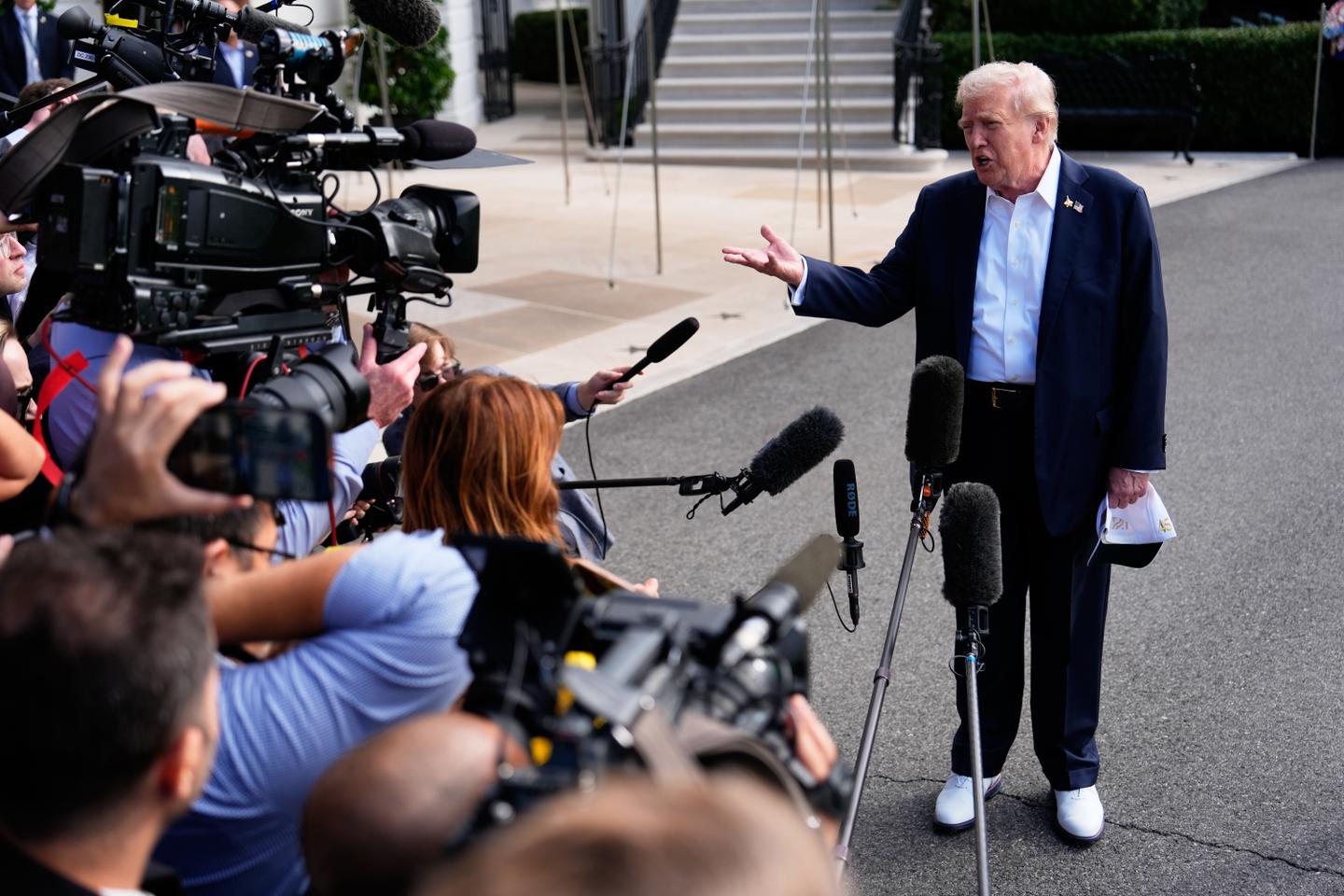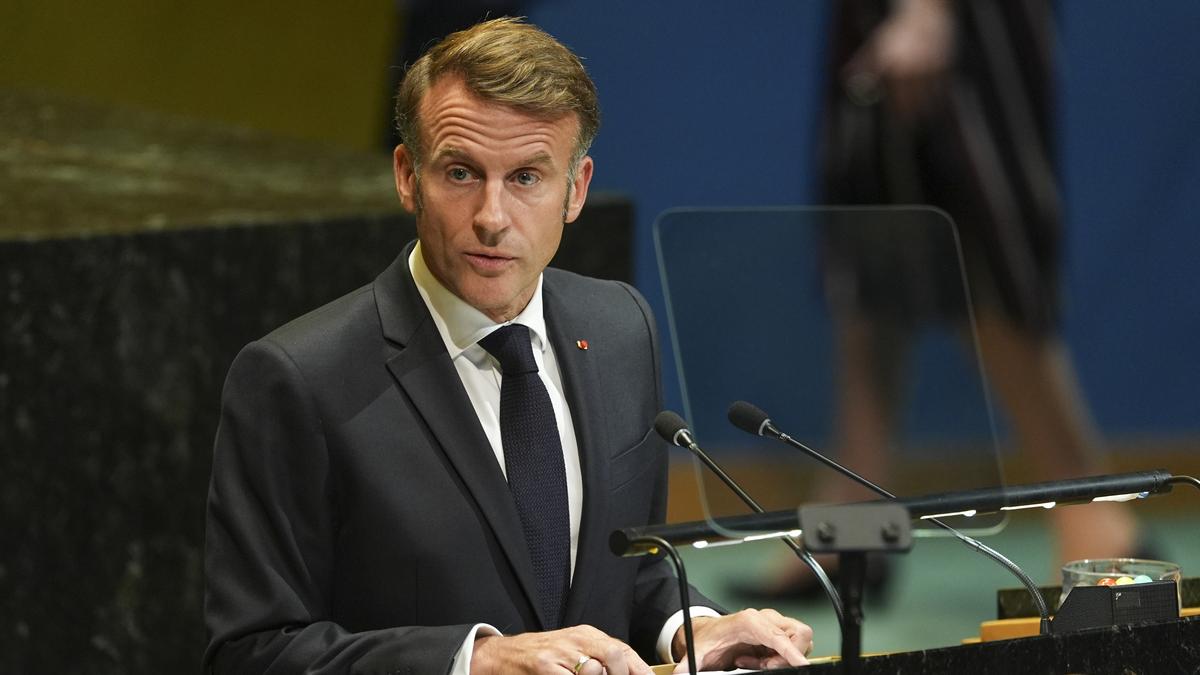On Monday, US President Donald Trump, standing alongside Israeli Prime Minister Benjamin Netanyahu, presented a 20-point plan to end the war in Gaza.
The proposal promises an immediate halt to fighting, the release of hundreds of Palestinian and dozens of Israeli captives, and a commitment that Palestinians remain in Gaza.
Despite these seemingly positive features, the plan is highly Israel-centric - an Israeli plan dressed up as American diplomacy - and reads as a demand for Palestinian surrender rather than a genuine call for peace.
Nearly two years into a genocide that has killed more than 66,000 Palestinians, displaced hundreds of thousands, and seen Israel entrench its military presence deep inside Gaza, the proposal compounds the crisis with numerous fatal flaws.
Chief among its problems is the plan's call for Gaza to be governed not by Palestinians but by international actors working in the service of Israel. It also demands that Palestinians disarm while Israel maintains its blockade and military presence, and leaves aid and governance in the hands of outside institutions - a formula that has already proved catastrophic in the case of the infamous Gaza Humanitarian Foundation (GHF).
New MEE newsletter: Jerusalem Dispatch Sign up to get the latest insights and analysis on Israel-Palestine, alongside Turkey Unpacked and other MEE newsletters
At the same time, Israel is given wide latitude: its withdrawal is left open-ended, tied only to vague conditions, while its troops will remain in a large "security perimeter" inside Gaza, and any prospect of Palestinian statehood is pushed indefinitely into the future.
Taken together, the plan's provisions function as a blueprint for Israel's Greater Israel project and the managed extinction of Palestinian resistance. They clear the way for Israel to expand its borders with as little difficulty as possible, making the Trump plan a formula for instability, not peace.
Fatal flaws
After months of talk about turning Gaza into a "Riviera", placing it under a US trusteeship to redevelop it as a tourism hub and eyeing its real estate opportunities, it comes as no surprise that Trump's latest plan excludes Palestinians from any role in governance, reconstruction or management.
Instead, authority is handed to international actors aligned with Israel. Article 9, for example, calls for the creation of an international "Board of Peace" headed by Trump and former British Prime Minister Tony Blair, while Article 15 mandates an International Stabilisation Force (ISF) whose primary mission is to guarantee Israeli security.
While Palestinian actors are expected to act 'within 72 hours', Israel is afforded open-ended flexibility and never required to carry out a full military withdrawal
The plan also entrenches the asymmetry between Palestinians and Israelis. It demands that Gaza be fully demilitarised, according to Articles 13 and 15, and its tunnels and weapons destroyed, per Articles 6 and 13, even as Israel preserves its longstanding air, land and sea blockade and keeps troops inside Gaza.
Article 3 only requires that Israeli troops plan a slow, "staged withdrawal" contingent upon opaque "standards, milestones and timeframes", outlined in Article 16 of the plan, to be negotiated "between the [Israeli military], ISF, the guarantors and the United States".
The absence of a concrete timeline for Israeli withdrawal is especially telling. While Palestinian actors are expected to act "within 72 hours", Israel is afforded open-ended flexibility and never required to carry out a full military withdrawal.
Israeli media have celebrated this aspect, with the Times of Israel noting that the final withdrawal would merely move troops to a massive "security buffer zone" inside Gaza. Netanyahu said on Tuesday that Israel would remain in "most of Gaza".
The elimination of tunnels is also significant, given the Israeli blockade in place since 2006. The UN has noted the necessity of Gaza's "tunnel economy" as a means of sidestepping the blockade. By 2009, "almost all possible goods" were transferred into Gaza through tunnels, including "construction materials, livestock, fuel, cash", and a wide range of other items.
If implemented in this form, the plan would leave Palestinians with a besieged territory incapable of defending itself from further Israeli attack and conquest.
Another major problem lies in the plan's approach to aid, which leaves the door open for mercenary groups like GHF to continue operations.
Although Article 8 allows for United Nations agencies and the Red Crescent to resume aid distribution, it likewise permits "other international institutions not associated...with either party". The UN has described GHF as a "death trap", holding it responsible for hundreds of deaths and incalculable suffering, but since it is technically an American entity, it would be free to remain active.
Finally, the plan aims to resuscitate and "reform" the Palestinian Authority (PA), which has historically served as a "subcontractor" and collaborator with Israel and is deeply unpopular among Palestinians.
With Article 9 declaring that Trump's 2020 peace plan will serve as a model for PA reform, it seems clear that such "reform" would focus almost exclusively on its ability to guarantee Israeli security.
Hamas cornered
Perhaps most important is what the 20-point plan leaves unsaid. There is almost no recognition of Palestinian political agency, or any mention of Israel's suffocating blockade of Gaza or its illegal and rapidly expanding occupation of the West Bank.
Article 19 floats the possibility of a future Palestinian state but uses vague language and doesn't mention a timeline.
Netanyahu, who has long boasted of his systematic efforts to thwart the possibility of a Palestinian state, said again on Monday that Israel would continue to "forcibly resist" Palestinian statehood.
Follow Middle East Eye's live coverage of Israel's genocide in Gaza
Where, then, does this leave Hamas, which is reportedly mulling the plan?
Hamas may ultimately decide to accept Trump's proposal as it stands - not because it fails to see the plan's obvious flaws or because it believes it advances the Palestinian cause, but because it may determine that it has been left with no other choice.
Hamas is cornered from at least three directions.
Above all, it is under pressure from Palestinians desperate for relief from two years of continuous bombardment, forced displacement and deliberate starvation. Israel has killed tens of thousands of people, the majority women and children, and maimed many more. The European Union and other western powers said last month that suffering in Gaza had reached "unimaginable levels".
Why Trump's 'peace plan' is a disaster for the Palestinians Read More »
For many Palestinians, survival now outweighs strategy.
Hamas is also cornered regionally. Numerous Arab and Islamic governments quickly signed off on Trump's proposal, a response possibly triggered by Israel's 9 September attack on Qatar.
Initially described as a "failure" because it seemed to alienate Trump, three weeks on, it is clear the strike had the opposite effect. Not only is the Trump administration still firmly in Israel's corner, but Arab and Muslim governments appear to have been terrified into acquiescence.
The fact that Qatar was attacked despite hosting the largest American military base in the Middle East underscores the point that the US will not protect Arab allies against Israel.
Egypt, home to the Arab world's strongest army, is a good case in point. President Abdel Fattah el-Sisi made a case this past weekend against going to war with Israel, suggesting that the cost of defending Palestinians against Israeli aggression was not worth it to Egypt.
Trump's plan presents Egypt as both an ally of Israel and an enemy of the Palestinian resistance. Article 15 says Egypt will work with the ISF and Israel to secure the Gaza border, while Article 16 says the ISF aims to ensure that Gaza "no longer poses a threat to... Egypt".
Facing an ultimatum
As it weighs whether or not to accept Trump's "peace" plan, Hamas is not only contending with local and regional pressures, but has also come under direct pressure from both the US and Israel.
At Monday's joint Trump-Netanyahu press conference, the proposal was presented as an ultimatum, with Trump warning that if Hamas rejected it, he would give Israel "full backing to finish the job".
Whatever Hamas decides, the striking irony of Trump's plan is that while it is designed to eradicate Palestinian resistance, it will almost certainly produce more of it
Following weeks of some of the worst carnage of the entire two-year war, a Hamas rejection would almost certainly provide the impetus for Israel to further intensify its attacks.
Whatever Hamas decides, the striking irony of Trump's plan is that while it is designed to eradicate Palestinian resistance, it will almost certainly produce more of it.
If anything, it demands a level of subjugation even harsher than the pre-7 October status quo. Rather than ending the war, Trump's plan would guarantee the next round of struggle.
For his part, Trump claimed that the plan would end "thousands of years" of fighting, once again revealing the president's profound ignorance of history and international law.
Both Palestinians and Israelis need better, wiser leadership from the US.
Israel needs help from Washington to rescue it from self-destructive policies that have left it more isolated than ever before. Swift intervention is essential, as pariah status cannot be endured for long.
The Palestinians, who now enjoy unprecedented global support, need the US to uphold the rule of law by compelling Israel to withdraw from Gaza, lift the blockade, reverse its occupation of the West Bank and allow genuine self-determination.
That would be a plan worth celebrating.
The views expressed in this article belong to the author and do not necessarily reflect the editorial policy of Middle East Eye.
[SRC] https://www.middleeasteye.net/opinion/trumps-20-point-plan-peace-call-palestinian-surrender
 Visit the website
Visit the website
